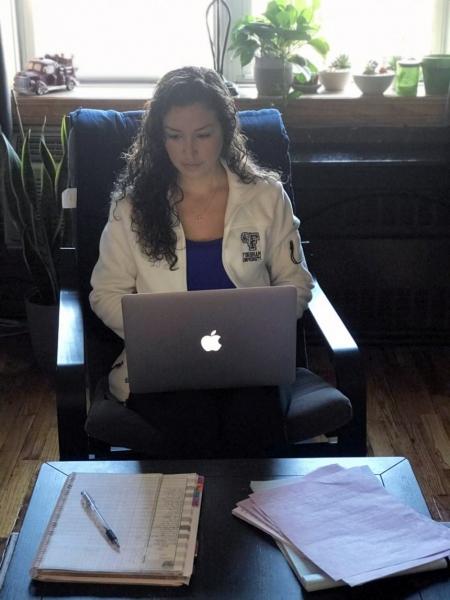
STEAM teacher Erin Schneider sometimes breaks a digital assignment into sections so her students at IS 259 in Brooklyn can't move forward without completing the previous part.
In our classrooms, we determine our students’ needs by assessing students periodically throughout our lessons. In this special period of remote learning, teachers don’t have the luxury of pausing a lesson and revising it in real time. But there are ways we can be creative when it comes to checking for understanding and cumulatively assessing our students’ knowledge.
In my first remote lesson, my middle school students were a tad overzealous — or maybe just overwhelmed — and dived headfirst into the assignment, skipping the PowerPoint I had tried to make interesting for them. So I went back to the drawing board.
One way I found to break the habit of rushing through a digital assignment is to compartmentalize lessons by using Google Forms. You are able to create “sections” within a digital assignment. In that way, you can create tiered assignments, where your students can’t move forward without completing the previous part. You can also include sections of material so that, for example, they are only watching a segment of the presentation before answering questions, instead of flying through the entire thing.
Paired work is great to help meet the mixed needs of your students. After assigning pairs or groups, ask your students to read an article or watch a video independently. The assessment is that they each have to generate questions on their own and then answer their partner’s questions. Assessing the depth of questions each student develops is a great way to determine their level of understanding.
Whether teaching remotely or in person, the final assessment is always the biggest challenge. What better time than this era of distance learning to offer students an alternative project to a standard exam?
Creative assessments will provide you with more insight into your students’ areas of difficulty and will also provide a platform for individualized expression, deeper understanding and increased self-esteem.
One method that can work for a variety of subjects is having students work backward. Provide your class with a scenario or an incorrect answer to a problem. Then ask them to: 1) explain reasons it occurred or reasons that the answer is incorrect; 2) provide examples to substantiate their answers; and finally 3) explain what should have been done to change the outcome.
This is an excellent way to evaluate a deep understanding of the topic. It touches on application of the material and challenges students to not only think forward but to problem-solve. It also requires that they extrapolate and justify their responses.
Mini-presentations are another favorite of mine because the table is turned and the students become the experts. Have your classes create an elevator pitch or a Public Service Announcement related to the topic or event you covered. Then have them post their projects on your digital platform and ask your students to challenge one another with questions. Perhaps each student is required to post one unique question per project. This holds the rest of the class accountable for viewing one another’s work and also further tests individuals on their breadth of understanding.
Last but not least, don’t be afraid to simply check in with your students to find out how they’re really doing. At the end of the day, we’re here for them — to teach them, of course, but we’re also here to support them. They need that support in these frightening times.
Erin Schneider is a STEAM teacher at IS 259 in Bay Ridge, Brooklyn.